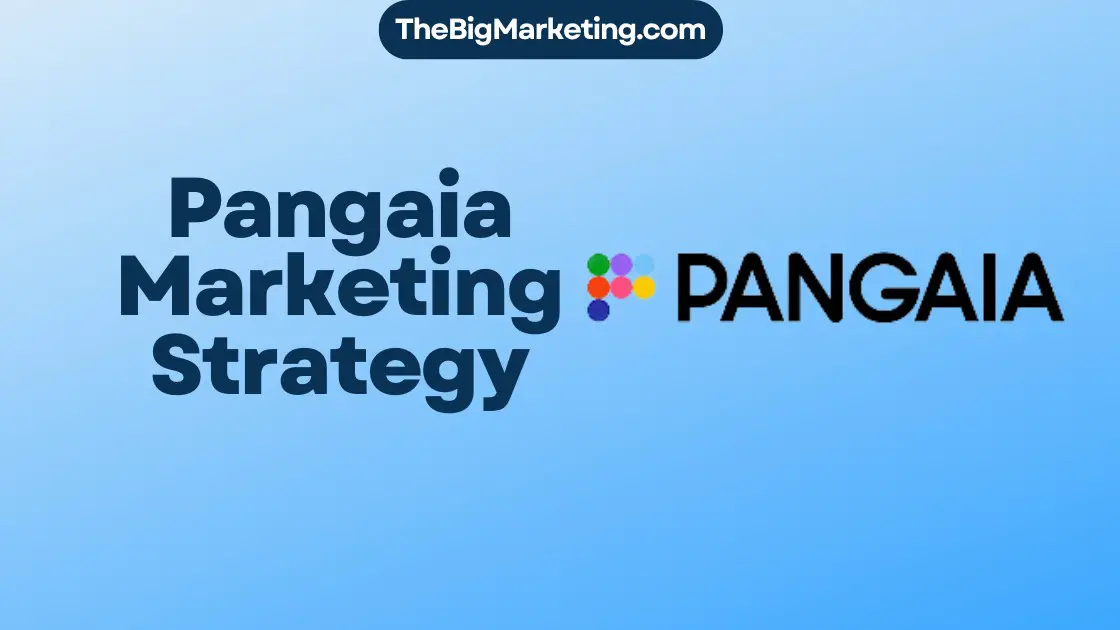What Is Virtual Marketing? Everything You Need to Know
Virtual marketing, also known as digital marketing, refers to marketing efforts carried out through the internet. It involves using various tools, channels, and data online to build relationships with customers, attract new business opportunities, and establish a brand identity. Virtual marketing allows businesses to deliver tailored messages to their target audience. With over half of the global population being active internet users, virtual marketing has become essential for businesses to connect with their audience online. It encompasses techniques such as search engine marketing (SEM), search engine optimization (SEO), social media marketing (SMM), email marketing, content marketing, pay-per-click (PPC) advertising, influencer marketing, remarketing, and marketing automation.
Key Takeaways:
- Virtual marketing, or digital marketing, is the practice of using online channels and tools to connect with customers and promote a brand.
- It includes techniques such as search engine marketing, social media marketing, email marketing, content marketing, and more.
- Virtual marketing allows businesses to reach a wide audience and deliver personalized messages to their target market.
- It is essential for businesses to adapt virtual marketing strategies to stay competitive in the digital era.
- By implementing effective virtual marketing techniques, businesses can increase brand visibility, engage with customers, and drive website traffic.
Why is Virtual Marketing Important?
Virtual marketing, also known as digital marketing, plays a crucial role in the success and growth of businesses across all industries. With the majority of people actively using the internet, it provides an opportunity for businesses to connect with their target audience where they are – online. By utilizing various virtual marketing channels such as social media platforms, search engines, email, and more, businesses can increase their brand visibility, engage with their target audience, drive website traffic, generate leads, and ultimately grow their business.
Virtual marketing offers a cost-effective and efficient way to reach a wide audience and create a strong online presence. Unlike traditional marketing methods, virtual marketing allows businesses to specifically target their desired audience, ensuring that their messages are received by those who are most likely to convert into customers.
Through virtual marketing strategies, businesses can leverage the power of social media, search engine optimization (SEO), email marketing, content marketing, paid advertising, and other techniques to build meaningful relationships with their customers. This enables businesses to understand their customers’ needs and preferences better, tailor their marketing efforts accordingly, and provide personalized experiences.
Moreover, virtual marketing provides businesses with invaluable data and insights into their marketing campaigns. Through analytics and tracking tools, businesses can measure the success of their marketing efforts, identify areas for improvement, and make data-driven decisions to optimize their strategies.
With the rapidly evolving digital landscape, it is essential for businesses to embrace virtual marketing and stay ahead of their competition. By establishing a strong online presence, businesses can not only survive but thrive in the modern business landscape.
The Benefits of Virtual Marketing
Virtual marketing offers numerous benefits for businesses:
- Increased brand visibility
- Engagement with the target audience
- Higher website traffic
- Lead generation
- Improved customer targeting
- Cost-effectiveness
- Measurable results
- Flexibility and adaptability
- Enhanced customer relationship management
These benefits make virtual marketing an indispensable tool for businesses looking to thrive in the digital age. With the right virtual marketing strategies and techniques in place, businesses can effectively connect with their target audience, drive growth, and achieve their marketing goals.
What are the Benefits of Virtual Marketing?
Virtual marketing, also known as digital marketing, offers numerous advantages for businesses in today’s digital landscape. Let’s explore the benefits and advantages of implementing virtual marketing strategies.
1. Cost-Effectiveness
One of the significant benefits of virtual marketing is its affordability compared to traditional marketing techniques. Businesses can reach a larger audience without breaking the bank. Virtual marketing methods, such as social media marketing, email marketing, and content marketing, allow businesses to optimize their marketing budget by targeting specific demographics and measuring the return on investment (ROI).
2. Accessibility and Mobility
With virtual marketing, businesses can be accessible to their target audience anytime, anywhere. As people increasingly rely on smartphones and other mobile devices, virtual marketing strategies enable businesses to connect with customers on the go. This accessibility enhances customer engagement and increases the chances of conversions.
3. Flexibility and Customization
Virtual marketing provides businesses with a range of options to choose from, allowing them to customize their strategies based on their target audience and marketing objectives. Social media marketing, email marketing, pay-per-click advertising, content marketing, and influencer marketing are just some of the flexible strategies that can be tailored to suit specific business needs. This level of customization ensures that businesses can connect with their audience in the most effective way.
4. Expanded Business Reach
Virtual marketing allows businesses to expand their reach beyond their local market. By leveraging online channels, businesses can connect with a global audience, increasing brand visibility and attracting potential customers from different geographical locations. This expanded reach opens up new business opportunities and growth potential.
5. Integration of Multimedia
Virtual marketing enables businesses to incorporate multimedia elements into their campaigns. This includes rich media such as images, videos, infographics, and interactive content. By leveraging multimedia, businesses can enhance the engagement and impact of their marketing efforts, effectively conveying their brand message and capturing the attention of their target audience.
6. Direct Communication with Consumers
Virtual marketing allows businesses to establish direct communication channels with their consumers. Through social media platforms, email marketing, and other online channels, businesses can engage in two-way conversations, gather feedback, address customer concerns, and build strong relationships. This direct communication fosters customer loyalty and trust, leading to long-term customer relationships.
7. Enhanced Monitoring and Analysis
Virtual marketing provides businesses with the tools and technologies to monitor and analyze their marketing efforts in real-time. This allows businesses to track the performance of their campaigns, measure key metrics, and make data-driven decisions to optimize their marketing activities. The ability to analyze the effectiveness of each strategy enables businesses to refine their approach and achieve better results.
8. Establishing Authority and Reputation
Through virtual marketing, businesses have the opportunity to establish authority in their niche and build a strong reputation. By consistently providing valuable and relevant content, businesses can position themselves as industry experts and thought leaders. Additionally, engaging in influencer marketing can boost brand reputation by leveraging the credibility and reach of influential individuals in the industry.
9. Complements Print Advertising
Virtual marketing complements traditional print advertising by expanding its reach and enhancing its effectiveness. By integrating virtual marketing strategies with print advertising, businesses can create cohesive and integrated marketing campaigns that target a wider audience and amplify their brand message.
What Are the Different Virtual Marketing Strategies?
Virtual marketing offers businesses a wide array of strategies to effectively reach their target audience and achieve their marketing goals. By implementing these digital marketing techniques, businesses can enhance their online presence, engage with their customers, and drive conversions. Let’s explore some of the most popular virtual marketing strategies:
-
Search Engine Marketing (SEM)
Search engine marketing encompasses both organic techniques such as search engine optimization (SEO) and paid advertising on search engines and social media platforms. SEO focuses on improving a website’s visibility and ranking on search engine results pages, boosting leads and customer acquisition. Paid search, on the other hand, involves purchasing ad space on search engines and social media platforms, ensuring better visibility and increasing brand recognition.
-
Social Media Marketing (SMM)
Social media platforms like Facebook, Instagram, LinkedIn, Twitter, and YouTube have become powerful tools for virtual marketing. SMM leverages these platforms to build brand awareness, reputation, and engage with the target audience. By creating tailored content and engaging with users, businesses can establish a strong online presence and foster meaningful connections with their customers.
-
Email Marketing
Email marketing allows businesses to attract, engage, and retain customers through personalized messages. By building a subscriber list and delivering targeted content, businesses can nurture customer relationships, drive repeat business, and encourage customer loyalty. Email marketing is a cost-effective strategy that offers a high return on investment.
-
Content Marketing
Content marketing revolves around creating and publishing valuable content to educate and engage the target market. It involves crafting articles, blog posts, videos, infographics, white papers, and more to provide informative and relevant content that positions the business as an industry authority. Content marketing not only attracts and retains customers but also helps boost organic search rankings and drive website traffic.
-
PPC Marketing
Pay-per-click (PPC) advertising allows businesses to display targeted ads to potential customers, paying only when the ad is clicked. PPC platforms like Google Ads and social media advertising platforms provide businesses with precise targeting options, ensuring that their ads reach the right audience at the right time. This strategy helps drive immediate traffic to a website and generate leads.
-
Influencer Marketing
Influencer marketing leverages the influence and popularity of individuals on social media platforms to promote products or services. By partnering with influencers who have a significant following in their niche, businesses can tap into a highly engaged audience and build brand credibility. Influencer marketing creates an authentic connection with consumers and boosts brand visibility.
-
Remarketing
Remarketing allows businesses to re-engage with website visitors who have previously expressed interest but did not convert. By implementing tracking pixels or cookies, businesses can deliver targeted ads to these potential customers across various platforms, reminding them of the brand and enticing them to complete their purchase. Remarketing helps businesses increase conversions and maximize their advertising ROI.
-
Marketing Automation
Marketing automation involves using software and technology to automate repetitive marketing tasks such as email campaigns, social media posting, and lead nurturing. By streamlining marketing processes, businesses can save time and effort while delivering personalized and timely messages to their target audience. Marketing automation helps businesses nurture leads, increase efficiency, and drive revenue growth.
By exploring and implementing different virtual marketing strategies, businesses can effectively reach their audience, drive engagement, and achieve their marketing goals. It’s crucial to understand the target audience, select the right strategies, and consistently optimize marketing efforts to stay ahead in today’s digital landscape.
Search Engine Marketing (SEM)
Search engine marketing (SEM) is a virtual marketing strategy that focuses on catering to what consumers are searching for online. It encompasses both organic search engine optimization (SEO) techniques and paid advertising on search engines and social media platforms.
Organic search involves optimizing website content and structure to improve visibility and ranking on search engine results pages. By employing relevant keywords, creating high-quality content, and improving website user experience, businesses can enhance their organic search rankings and attract more organic traffic.
Paid search refers to buying ad space on search engines or social media platforms to ensure visibility and differentiate webpages from regular search results. With paid search advertising, businesses can target specific keywords, demographics, and locations to reach their desired audience.
SEM plays a crucial role in helping businesses reach their target audience when they are actively searching for relevant products or services. By leveraging both organic and paid search techniques, businesses can increase their brand visibility, drive website traffic, and ultimately achieve their marketing goals.
Benefits of SEM:
- Increased brand visibility
- Targeted audience reach
- Higher website traffic
- Improved search engine rankings
- Enhanced market targeting
- Increased potential for conversions
Organic Search vs. Paid Search:
| Organic Search | Paid Search |
|---|---|
| Free visibility | Requires investment |
| Long-term results | Immediate results |
| Builds website authority | Instant visibility |
| Requires consistent optimization | Targeted audience reach |
| Relies on content relevance | Allows targeting keywords |
Search Engine Optimization (SEO)
Search engine optimization (SEO) is a crucial virtual marketing strategy that focuses on improving a website’s visibility and ranking on search engine results pages. By optimizing various elements of a website, businesses can enhance their online presence and attract more organic traffic.
The Importance of SEO Techniques
SEO techniques play a vital role in improving search engine rankings and driving targeted traffic to websites. By incorporating relevant keywords, creating high-quality content, and optimizing website structure, businesses can increase their chances of appearing on the first page of search results.
Proper keyword usage is essential for search engines to understand the website’s content and relevance to users’ search queries. Including keywords in header tags, meta descriptions, and strategically throughout the content helps search engines index web pages accurately.
Another crucial aspect of SEO is internal link building. By interlinking relevant pages within a website, businesses can improve user navigation and ensure that all pages receive an appropriate level of visibility. Additionally, external link building, which involves obtaining links from reputable and relevant websites, can enhance a website’s authority and credibility, leading to higher search rankings.
| SEO Techniques | SEO Benefits |
|---|---|
| Keyword optimization | Increase organic search rankings |
| Internal link building | Improve website navigation and visibility |
| External link building | Enhance website authority and credibility |
| Optimized website structure | Improve user experience and search engine crawling |
| Optimized loading speed | Reduce bounce rate and improve user experience |
The Benefits of SEO
Implementing effective SEO techniques offers numerous benefits for businesses:
- Increased organic search rankings: SEO helps businesses achieve higher rankings in search engine results, leading to increased visibility and a higher likelihood of attracting website visitors.
- Increased website traffic: Ranking higher in search results drives higher-quality organic traffic to the website, resulting in a greater opportunity for engagement and conversions.
- Establishment of brand authority: A strong SEO strategy allows businesses to demonstrate their expertise and authority in their industry, building trust and credibility among their target audience.
- Better user experience: SEO techniques such as optimized website structure and loading speed contribute to a better user experience, reducing bounce rates and increasing engagement.
- Long-term results: Unlike paid advertising, SEO provides long-lasting benefits. Once a website achieves a high ranking, consistent effort is needed to maintain it, but the results can be sustained over time.
By implementing optimal SEO techniques and staying up-to-date with industry trends and updates, businesses can leverage the power of search engines to increase visibility, drive traffic, and achieve their marketing goals.
Social Media Marketing (SMM)
Social media marketing (SMM) is a popular virtual marketing trend that leverages social media platforms to promote brand awareness, reputation, and engagement. With billions of active users on various platforms such as Facebook, Instagram, LinkedIn, Twitter, and YouTube, SMM allows businesses to reach their target audience where they spend a significant amount of time.
SMM involves posting content, responding to comments and queries, sharing valuable information, and engaging with the audience. It provides businesses with an opportunity to build brand loyalty, generate leads, and drive website traffic. By establishing a strong presence on social media platforms, businesses can foster a sense of community and connection with their target market.
Benefits of Social Media Marketing
Social media marketing offers several benefits for businesses:
- Increased Brand Visibility: By actively engaging with users on social media platforms, businesses can increase their brand visibility and awareness among their target audience.
- Continuous Brand Engagement: SMM allows businesses to establish a direct line of communication with their audience, responding to their queries and comments, and sharing valuable information to keep them engaged.
- Lead Generation: Social media platforms provide businesses with an opportunity to generate leads by attracting the attention of potential customers and driving them to their website or landing page.
- Targeted Advertising: Social media advertising allows businesses to reach their specific target audience by leveraging detailed demographic, interest, and behavior targeting options.
- Analytics and Insights: SMM provides businesses with valuable analytics and insights on audience demographics, engagement metrics, and content performance, allowing for strategic decision-making and optimization.
Effective Social Media Marketing Strategies
To make the most of social media marketing, businesses should consider implementing the following strategies:
- Create a Content Strategy: Develop a content strategy that aligns with your target audience’s interests and preferences, and create compelling, shareable content to drive engagement and reach.
- Engage with Your Audience: Actively respond to comments and queries, foster conversations, and encourage user-generated content to create a sense of community and connection.
- Utilize Influencer Marketing: Collaborate with influencers who have a strong following in your industry to expand your reach and leverage their credibility and influence.
- Run Paid Advertising Campaigns: Use social media advertising platforms to target specific demographics, interests, and behaviors, ensuring your content reaches the right audience.
- Analyze Your Data: Regularly monitor and analyze your social media performance metrics to identify trends, refine your strategies, and optimize your campaigns for better results.
By harnessing the power of social media marketing, businesses can effectively engage with their target audience, build brand loyalty, and drive tangible business results.
Content Marketing
Content marketing is a essential and cost-effective virtual marketing strategy that businesses employ to educate and engage their target audience. By creating and publishing a variety of content such as articles, blogs, videos, infographics, white papers, and newsletters, businesses can establish themselves as thought leaders and build trust with their audience.
A key component of content marketing is the use of rich media, which includes images, embedded videos, animations, and online catalogs. Incorporating rich media enhances visitor engagement and retention, making the content more visually appealing and interactive.
One of the primary objectives of content marketing is to drive website traffic. By consistently posting valuable and relevant content, businesses can attract and influence consumers. Research shows that consumers typically consume multiple pieces of content before making a purchasing decision. Therefore, it is crucial for businesses to provide a steady stream of valuable content to keep their audience engaged and informed.
An effective content workflow is vital for successful content marketing. A documented content workflow allows businesses to streamline their content production and delivery process, ensuring that content is created and published consistently and efficiently. This helps maintain a high level of quality and relevance in the content being produced.
Benefits of Content Marketing:
- Establishes thought leadership
- Builds trust with the audience
- Increases website traffic
- Enhances visitor engagement and retention through rich media
- Attracts and influences consumers
- Provides valuable and relevant information
- Helps businesses stay competitive in the online market
- Improves search engine rankings through optimized content
- Generates leads and drives conversions
| Types of Content | Description |
|---|---|
| Articles | Written pieces that provide informative and in-depth insights on specific topics |
| Blogs | Regularly updated posts that share industry news, trends, tips, and other relevant information |
| Videos | Visual content that can convey complex ideas in an engaging and easily digestible format |
| Infographics | Visual representations of data or information that simplify complex concepts and make them more visually appealing |
| White Papers | Detailed reports or guides that delve into a specific topic or issue, providing in-depth analysis and solutions |
| Newsletters | Regularly distributed emails that share updates, news, and valuable content with subscribers |
Conclusion
Virtual marketing, also known as digital marketing, is a powerful tool for businesses to connect with their target audience, expand their reach, and achieve their marketing goals. Through various strategies and techniques, businesses can leverage virtual marketing to improve brand visibility, engage with customers, drive website traffic, and increase leads and sales.
The key to successful virtual marketing is understanding the target audience, selecting the appropriate channels and strategies, consistently delivering valuable content, and monitoring and adapting marketing activities to optimize results. By implementing an effective virtual marketing strategy, businesses can unlock the full potential of digital sales and revolutionize their business.
With the increasing dominance of the internet and the growing number of active internet users globally, virtual marketing has become essential for businesses. It offers a cost-effective and efficient way to reach a wide audience, establish a brand identity, and create a strong online presence. Whether it’s through search engine marketing, social media marketing, email marketing, or content marketing, virtual marketing provides businesses with the opportunity to connect with their audience where they are – online. As technology continues to evolve, staying updated on the latest virtual marketing trends and strategies will be critical for businesses to stay competitive in the digital landscape.



